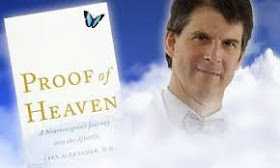 |
| Leonardo da Vinci's Notebook |
Starting out
In 1974, I dropped out of school, or into life, whichever you prefer. I was reading all the books I couldn’t read in Chem 1A, Freshman Calculus, and Honors Literature at UC Berkeley. A friend loaned me a biography of Leonardo Da Vinci and I, of course, read it.
I was interested to read that da Vinci attributed his artistic preeminence to the fact that “He sketched with his left hand and painted with his right.” Of course, we all learned in school that Leonardo wrote from right to left with his left hand (didn’t we?).
I have never shown any innate artistic abilities. Literature was my thing: poetry, novels, narrative prose. I asked myself, “How could I apply Leonardo’s practice to myself?”
By now, most of us have heard that the brain is not symmetrical left-right. Different higher order functions are found on different sides. As he was in so many other ways, was da Vinci ahead of his time in realizing the brain’s asymmetry?
If sketching for da Vinci was form, and painting was color, then he was implying that form is found in the left hand-right brain and color is found in the right hand-left brain. Neuroscientists may argue this particular description of brain function, but you must give da Vinci credit: he is one of the greatest painters and scientists of all time.
I reasoned that form in writing was analogous to organizational structure, whereas color was analogous to poetic expression. I decided to try da Vinci’s approach: first I would write the structure, the organization of an essay, with my left hand from right to left, and then come back and write the final draft with my right hand from left to right.
I trained myself to write with the left hand from right to left, starting with the alphabet. I found that the physical act of mirror writing is easier than reading it. My hand trained fairly easily; my eyes adapted with greater difficulty.
Our Flip-Flop Nervous System
If one loses a hand in an accident, the other hand can substitute fairly quickly. This is because the actions ordered by the brain to one hand can pass through the corpus callosum — the interconnecting nerves between the brain halves — and go to the other side of the brain and then to the other hand. The bio-mechanical equivalent of writing left to right with the right hand is writing right to left with the left hand.
When we write with the right hand from left to right, we are extending our right arms. When we write with the left hand from left to right, as a typical left-handed person does, the left arm is flexing. The action in the left arm that mirrors the actions of the muscle group in the right arm is extending the left arm, writing from right to left, mirror writing, or writing “backwards."
Thus the transfer of neurological instructions from right arm to left arm through the corpus callosum is only identical in mirror-writing. For this reason, it is fairly easy to learn to write left-handed from right to left, if one is ordinarily right-handed. If one reads it in the mirror, it looks normal.
When I write with my left hand from right to left, my conceptual flow improves. My analytic brain is sharper when writing that way. While in college, after mastering the technique, I began to take notes in class this way and my grades went up from Bs to As.
It is also true that the eyes are left-right oriented, but in this case each eye’s field of vision is separated left-right. In other words, the left half of each eye’s vision goes to the right brain, and the right half of each eye’s vision goes to the left brain. Thus glancing to the left stimulates right brain function, while glancing to the right, the signals go more to the left brain.
The lens of the eye focuses an image on the back of the eyeball that is upside down and backwards. My hypothesis is that in order for the brain to take the visual signals from the photoreceptor and optic nerves of the eyes and convert it to a real image, it needs to invert and reverse the image it receives. This is achieved by the reversal of the nerve bundle as it enters the brain from the spine, i.e. it flips.
Otherwise, we would only see the world as an upside down and backwards imprint, since our nerve sensors can only show us a reversed imprint of the object, not the object itself.
For example, if we grasp a stone, we do not feel the stone in the brain. We feel the reverse imprint of the nerves of touch in the hand, just as the eyes get a reversed and inverted visual image. The only way we get a real image is by the reversal of the nerve bundle. Thus, the left brain controls the right side of the body and the right brain controls the left.
The idea here is that there is not a brain processing center that uses algorithms to interpret reality. Rather, the reversal and inversion are accomplished in the neurological pathway. Isn't Nature efficient in accomplishing such elegance in the physio-neural layout itself?!!
The only part of our sensory apparatus that does not reverse as the nerves pass through the vertebrae and up through the spinal cord is the sense of smell which enters the brain through the forehead. Smell has no spatial orientation. Hence, the old saying, “The nose knows.”
The muscular skeletal system is indeed bilaterally symmetrical, the same on both sides of the body. The cardio pulmonary system is also, with some allowance for the heart. But the gastro-intestinal system is definitely not bilaterally symmetrical. It should not surprise us that parts of the brain are not bilaterally symmetrical either.
Thoughts that originate in the left side of the brain control the right side of the body, and vice versa. Since writing, painting, and other higher order functions of the brain must interface with the muscular-skeletal systems in order to find expression in the world, they use the parts of the brain that are the same left and right.
So, if form is in the right brain, then the nerve signals find a more efficient path traveling directly to the left hand, rather than traveling through the corpus callosum and then to the right hand. Conversely, if color is in the left brain, then it is more efficient neurologically for color to be expressed by the right hand. Whether these distinctions between form and color are the same in all human brains, I can only confirm that my experience and da Vinci’s are similar.
Bio-Logic
Another expression of this idea is in Logic itself. In Logic theory, the inverse of something is not necessarily true, nor is the converse necessarily true, but the inverse of the converse, the contrapositive, is necessarily true. It is the same as the senses – the inverse of the converse is a real image.
For example, let’s assume the premise, “If it rains, I will stay indoors.” The inverse, “If I stay indoors, it will rain” is not necessarily true. Nor is the converse, “If it does not rain, I will not stay indoors,” but the contrapositive, “If I did not stay indoors, it did not rain” is necessarily true.
How can we explain the fact that mental Logic operates according to the same principles as our senses? This is a mystery yet to be plumbed. Yet it should not surprise us.
Another perhaps more surprising aspect of this discussion is in the parting of hair. Parting the hair emphasizes the part of the brain at work by favoring one field of view over the other. Does this mean that parting the hair indicates a philosophical/mental predisposition?
From my years of observing this question, I believe that it does. Some may argue that this silly little habit is meaningless.
I believe in the idea that everything means something. Nothing is without meaning. There must be a reason for the choice of hair parting.
It may reflect or promote the use of the left brain over the right, or vice versa. I will stick my neck out and argue that those who part their hair on the left tend to rely on theory, and those who part their hair on the right tend to rely on data. Of course, in a centered world the neutral center finds the balance of the two. As Dan O’Neill, the cartoonist known for his Odd Bodkins series, once observed, “A bird can’t fly without two wings, and it can’t fly at all without a heart.”
East and West
Another corollary is in the way language is written. Arabic, Hebrew, and phonetic Chinese are written from right to left. Does this affect culture, emphasizing the right brain instead of the left?
These are unconscious choices that were made at some point in history. Perhaps there is a dialectical relationship between the mental habits that are adopted, and the way in which language is written. Perhaps the Eastern proclivity for collectivism is right-brained while the Western tendency for individualism is left-brained.
To this day, I take notes in business meetings with my left hand, prewrite organizational structures with the left, and write poetry with the right. I have found this makes a significant difference. My experience as a film critic bears this out.
Some years ago, I wrote a weekly film review column for a small newspaper. After watching a film, I would outline my piece with a structure left-handed and fill that structure in with detail. Then I would rewrite the piece right-handed, adding “color” to what would be an otherwise dry bit of writing.
It became a popular, a well-liked column. One week I didn’t have time to prep the structure, so I wrote straight from the right hand and did my best. After I submitted it the editor said to me with disappointment in his voice, “This is not your usual stuff.”









